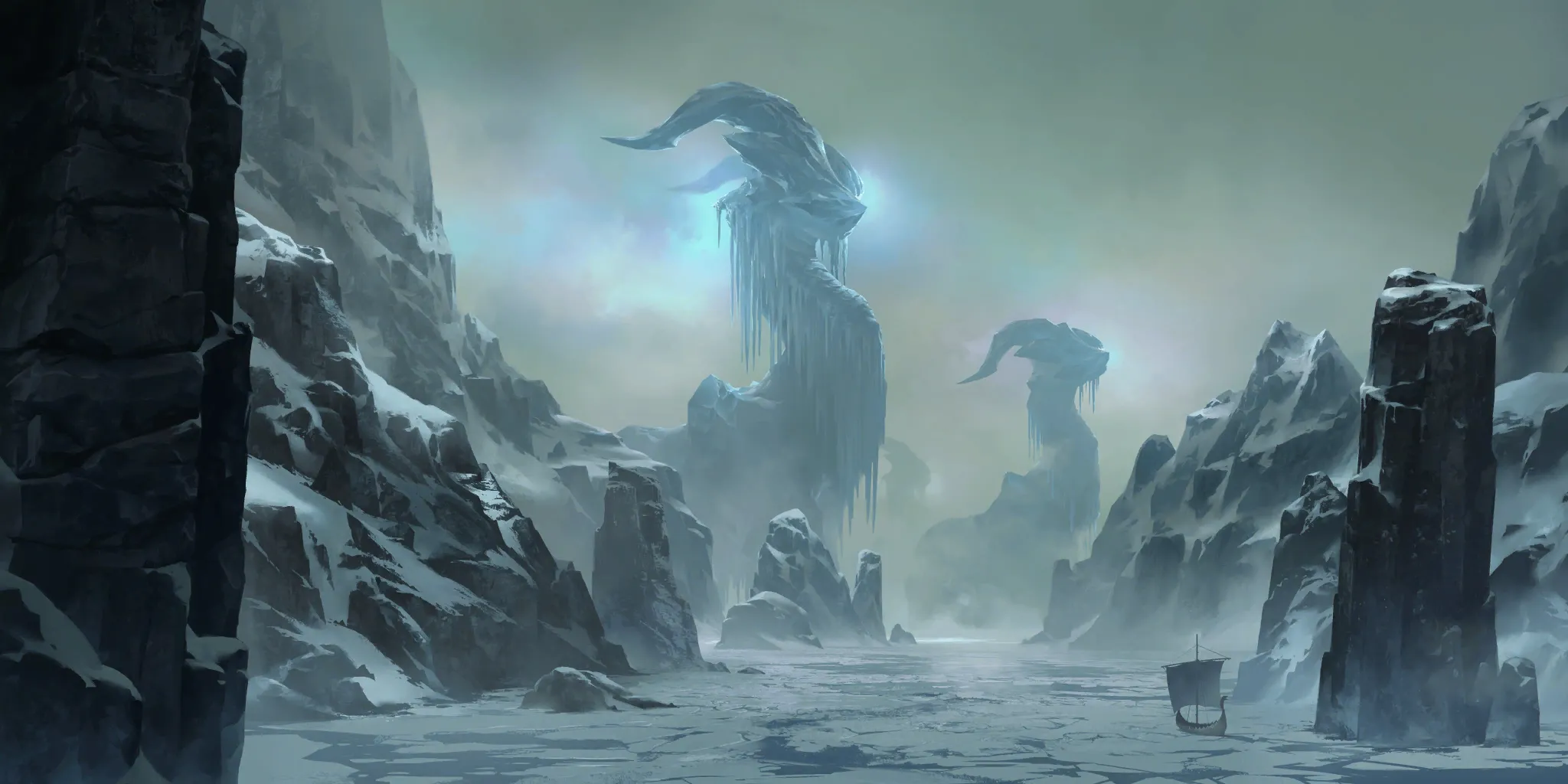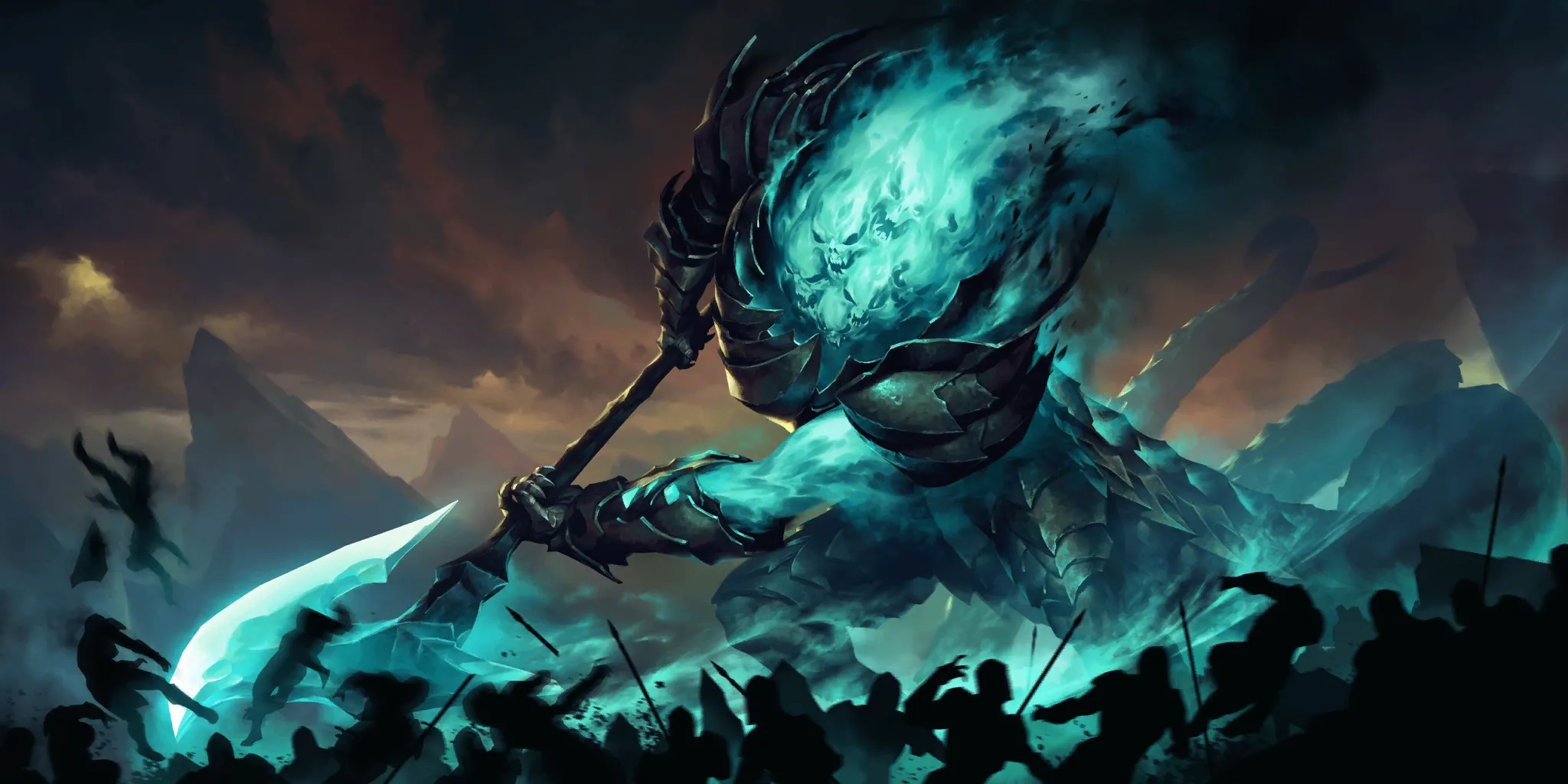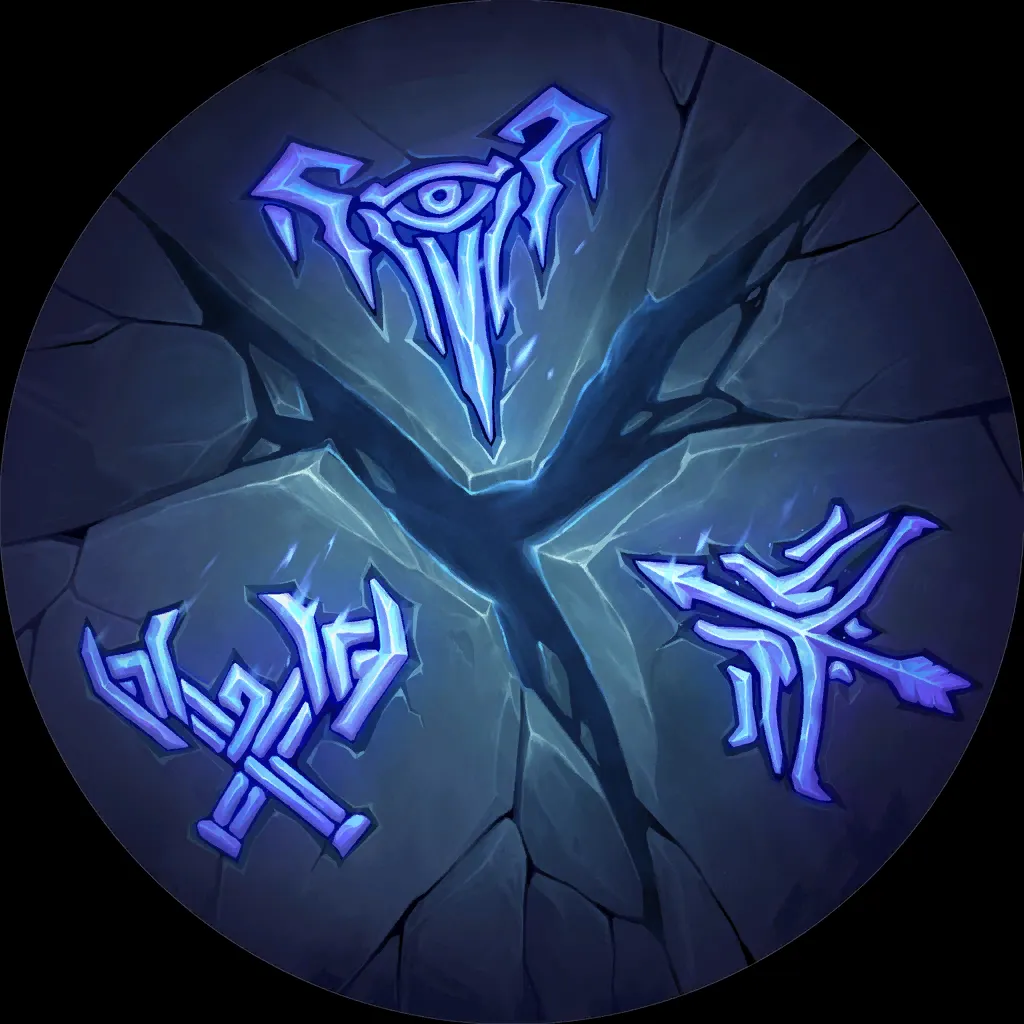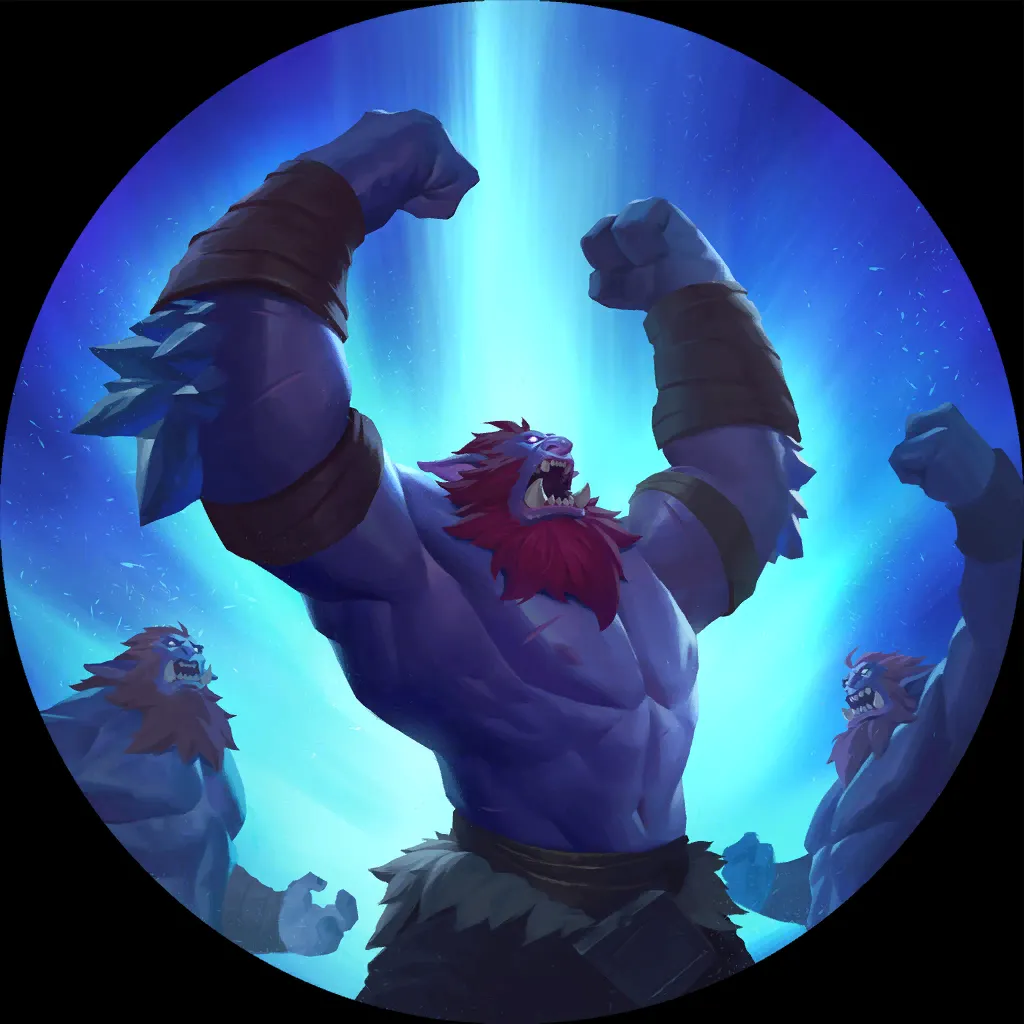Welcome back to Rogue Deck Doctor, the place where no idea is too crazy, no archetype is too unwieldy, and no brew is too batshit. So, come along as we dive headlong into the whirlpool of creativity and see what glorious nonsense awaits us in its depths.
The first episode of Rogue Deck Doctor went amazingly so we're gonna keep it rolling. Comment your deck ideas below and most-liked gets an article detailing my process of creation, Muahahahahah! >:D pic.twitter.com/6G7SeoNSis
— Jordan Abronson (@XxWhatAmIxX) July 27, 2022
You’ll have to bring your scuba gear, because the copium levels in this water can get pretty high. But as long as you can keep your head, we’ll detail our process step by step as we try to find the gems among the dross. Come along and see what our target will be today.
Rhasa the Husk Sunderer please 🙂
— Henneky (@Henneky1) July 27, 2022
What is Rhasa, the Husk Sunderer
This is an interesting one, because the suggested combo, well…
It doesn’t *actually* work.
Yeah, I went and tested this and, unless your board is completely full, dropping Rhasa the Sunderer onto a board where he will eat a Husk will not cause him to trigger all on its own.
onto a board where he will eat a Husk will not cause him to trigger all on its own.
That said, we can still do some pretty interesting and cool things here. What the Husks will do that synergizes nicely with Rhasa is create a bountiful harvest of easily accessible bodies. And for Rhasa to do his thing, we want lots of delicious sacrifice triggers.
The Husk-sourcing Problem
Husks are an interesting conundrum because they can come from two sources. Shadow Isles provides us with two Husk-summoning followers, Sultur and Vora
and Vora , as well as the Hate Spike
, as well as the Hate Spike spell. That’s nine Husk triggers in a forty-card deck, already quite a few.
spell. That’s nine Husk triggers in a forty-card deck, already quite a few.
The other place we can of course get Husks is from Evelynn , the deliciously dangerous new Runeterran champion who will give us access to every Husk there is. Unfortunately, a deal with this demon will cost you an entire region – we’ll only have access to Shadow Isles for Rhasa the Sunderer
, the deliciously dangerous new Runeterran champion who will give us access to every Husk there is. Unfortunately, a deal with this demon will cost you an entire region – we’ll only have access to Shadow Isles for Rhasa the Sunderer .
.
So the first question I need to ask when attempting to create this deck is whether the added power of additional Husks is worth the cost of an entire region. This brings us to something that I want to ask no matter what decision I am making.
Cost Versus Power
Is the power I gain worth the cost I am paying to gain it?
Because we are playing a card game with limited deck space, every time we add something we’re taking out something else. So, every bit of cool new tech we slot in is shoving something else out to make space for itself. We need to ask, was that worth it?
In this case we’re asking if access to Domination , Solitude
, Solitude , Steem
, Steem , Allure
, Allure , and Evelynn
, and Evelynn , is worth losing the ability to play cards from an entire second region. Since we already have nine points of Husk creation, I think that I’m going to go ahead and fall on the negative side of this one.
, is worth losing the ability to play cards from an entire second region. Since we already have nine points of Husk creation, I think that I’m going to go ahead and fall on the negative side of this one.
So now we have the whole of Runeterra available to us.
What does our second region want to be? What are some cool champions from Shadow Isles, and from whichever second region we choose? Preferably champions that synergize well with both Husks and Rhasa the Sunderer .
.
Searching for Synergy
For our second region, I’ll admit I have always personally found an attraction to the combination of Shadow Isles and Freljord, whatever archetype we’re going to build with it. And through that combination we get access to They Who Endure , who will absolutely love all the Husks we are going to be sacrificing.
, who will absolutely love all the Husks we are going to be sacrificing.
As to champions, I want to go looking for other powerful units that like making and sacrificing units. The two that jump to my mind are Elise and Kalista
and Kalista – two lovely ladies who will happily spam the board and benefit from those spammed units living and dying alongside them.
– two lovely ladies who will happily spam the board and benefit from those spammed units living and dying alongside them.
For Kalista though, we also want some solid targets that she can bring back. The Husk-makers are lovely, but we also have this lovely new Hallowed mechanic that enjoys being triggered over and over: Boisterous Host is just a solid one-drop, Phantom Butler
is just a solid one-drop, Phantom Butler loves to put on pressure, and Conductor Of The Mists
loves to put on pressure, and Conductor Of The Mists is two bodies all on its own for all our sacrifice triggers.
is two bodies all on its own for all our sacrifice triggers.
Speaking of sacrificing, we’ve got quite a lot of that going on. But whatever are we going to do if the things we are sacrificing our units *to* get blown up?
Perhaps we should find some way to deal with, or prevent this unfortunate eventuality?
Protection
When you’re setting up to make a couple of large threats rather than many little ones – in other words, going tall rather than wide – you generally need some way to help that tall threat do its thing. In our case, any unit that we sacrifice a powerful Husk to, especially Kalista or Elise
or Elise , will become our foe's target.
, will become our foe's target.
Luckily, Freljord has just the type of tricks to deal with that sort of nonsense. Troll Chant has been a premier pump spell for basically its entire existence, and Three Sisters
has been a premier pump spell for basically its entire existence, and Three Sisters was a powerful Tellstone before Tellstones were cool. With a few copies of each, our opponents will have to think twice before targeting us.
was a powerful Tellstone before Tellstones were cool. With a few copies of each, our opponents will have to think twice before targeting us.
I’ll also put in that while Atrocity isn’t exactly protection, if we respond to our opponent trying to remove our large threat by throwing it at their head and killing them, then said large threat of ours has already done its job. Protection at that point becomes rather unnecessary.
isn’t exactly protection, if we respond to our opponent trying to remove our large threat by throwing it at their head and killing them, then said large threat of ours has already done its job. Protection at that point becomes rather unnecessary.
What’s Missing?
This brings us to the last couple of cards in our deck. And this is the point where we really need to start asking the important questions about what our deck is missing. All decks will of course have different levels and priorities on each of these, but the basic checkmarks on my notepad here include the following:
- A way to win.
- A way to make that win consistent.
- A way to consistently spend our mana in the first couple turns.
- A way to stop our opponent’s from winning with attackers.
- A way to stop our opponent’s from winning with backliners
- A way to deal with our opponent developing into us before attacking.
- A way to deal with an open attack.
- A backup plan.
As far as winning goes we can make either a Husked-up Rhasa the Sunderer or a very large They Who Endure
or a very large They Who Endure . And perhaps even a leveled-up Kalista
. And perhaps even a leveled-up Kalista can get the job done. That’s enough different win conditions that they have at least a small amount of consistency simply from quantity.
can get the job done. That’s enough different win conditions that they have at least a small amount of consistency simply from quantity.
Our early curve is looking quite powerful with Husk generation, Elise and Hallowed triggers, so no cause for worry on that front. This will also give us quite sufficient blockers to deal with any early attacking units. When in doubt, just throw spiderlings in their way after all.
and Hallowed triggers, so no cause for worry on that front. This will also give us quite sufficient blockers to deal with any early attacking units. When in doubt, just throw spiderlings in their way after all.
We do have Hate Spike and the occasional Entomb
and the occasional Entomb to deal with backline units, but there’s definitely a dearth of interaction here.
to deal with backline units, but there’s definitely a dearth of interaction here.
An opponent’s development can almost always be met by another unit to block with, so that shouldn’t be all that big of a deal, unless they develop something large.
All of our interaction right now *is* at Fast speed or faster, so we deal with open attacks alright, and in later turns Rhasa the Sunderer is a brutal open-attack punisher. If we live, then their units will not.
is a brutal open-attack punisher. If we live, then their units will not.
As far as a backup plan goes it would be nice to have a more concrete one, but swarming our opponent to death and finishing off with a small Atrocity isn’t the worst thing in the world.
So where does that leave us?
Last Touches
We’ve gotten to the end and what we seem to be looking to add is a small extra bit to deal with our opponent’s backline units, as well as some added consistency. In the end, I think there is no better place to turn than Black Spear . I’m generally not a fan of this card as it is unwieldy and inconsistent at best. However, in this shell, with all of our units dying everywhere and Husks being eaten, we should have it ready to fly extremely consistently.
. I’m generally not a fan of this card as it is unwieldy and inconsistent at best. However, in this shell, with all of our units dying everywhere and Husks being eaten, we should have it ready to fly extremely consistently.
We also lack any form of card draw – this is the perfect deck for Glimpse Beyond though, so that problem is easily fixed.
though, so that problem is easily fixed.
Fine Tuning
At this point the deck looks like this:
Forty cards is good enough to sound the starting horn, but we can definitely power up just a tad more before we make our way out into battle.
Firstly, I do love Vora for her Husk generation, but nine three-drops is a bit clunky, so I’d love to trim a copy there.
for her Husk generation, but nine three-drops is a bit clunky, so I’d love to trim a copy there.
I’ll also say that while Conductor Of The Mists is a solid midrange card and we enjoy it, double drawing them tends to be quite awkward. Another trim along the shrubbery and we’ve suddenly got two slots worth of powerful cards to play with.
is a solid midrange card and we enjoy it, double drawing them tends to be quite awkward. Another trim along the shrubbery and we’ve suddenly got two slots worth of powerful cards to play with.
And what was it that we were missing just a touch of?
Ah yes, ways to interact with decidedly larger units from our opponent!
Well, never fret: trusty old Vengeance is here to seal the deal and remove anything from play that your opponent dares to commit to the board.
is here to seal the deal and remove anything from play that your opponent dares to commit to the board.

7 cards

33 cards
















Behold, our completed creation, Muahahahahahha!
Final Notes
As always, even after all the tuning and adjustment we’ve put in here, this is only version 1.0. All further iterations will require actual play, experience, and above all field-testing to find the right cocktail of cards. Before you go and take this for a spin though, I’ll put in a few words of advice.
Know you foe, and know yourself
This is the quintessential midrange deck. You are going to be looking to play aggressively against more controlling opponents, and more controlling against anyone whose endgame you can beat with hard removal and giant Overwhelming threats.
Know your enemy as you make choices in your matchups.
Think Atrociously
Remember at all times that you are an Atrocity deck. Even if it doesn’t seem like it early in the game, every single health point you can chip off matters. You’re never going to know whether that single damage you missed leaves them alive at one when you throw They Who Endure
deck. Even if it doesn’t seem like it early in the game, every single health point you can chip off matters. You’re never going to know whether that single damage you missed leaves them alive at one when you throw They Who Endure at them. So: don’t miss it.
at them. So: don’t miss it.
Go Get' Em
Last but not least, you want to be some level of proactive against almost all opponents. This means that, in your mulligans, generally think about throwing back your spells and top end, and look for early unit pressure and your powerful early-game champions.
Wrapping Up
With that we shall emerge from the copium whirlpool, doff our swimming gear, and head back out into the dangerous lands of Ladder.
I wish you luck, travelers, and until next time on Rogue Deck Doctor, I hope you can endure the fluctuations of luck that run through Runeterra.



